Communities around the irrigation channels, whose conditions worsened due to the flooding caused by Hurricane Fiona, will continue to be at risk because there are no immediate solutions to prevent obstructions during extraordinary rainfall events, experts and the government of Puerto Rico told the Center for Investigative Journalism (CPI, in Spanish).
Although the Federal Emergency Management Agency (FEMA) set aside $62 million in Hurricane María recovery funds for permanent work projects for this network of irrigation channels, the process is still in the design stage, one of the steps required by the federal agency to allocate the funds and, eventually, disburse them. The Puerto Rico Electric Power Authority (PREPA) submitted three permanent works projects to FEMA in October 2021 for the three irrigation districts it manages in Patillas in the South, Isabela in the North and Lajas in the southwestern coast.
These structures belonged to the former Puerto Rico Water Resources Authority (PRWRA), created in 1941 to manage the reservoirs used for electricity generation. Irrigation channels are part of that system and now provide water for agriculture in those areas. In 1979, the PRWRA became PREPA.
The director of PREPA’s Irrigation, Dams and Reservoirs Division, José Bermúdez Díaz, said that due to “FEMA’s bureaucratic” process, works are not expected to start until 2024.
Bermúdez Díaz said the funds — which were requested through the FEMA Accelerated Obligation Strategy (FAASt) initiative — will be used to line the irrigation channels with concrete, for water delivery valves for agricultural clients and for infrastructure for water flow measurements.
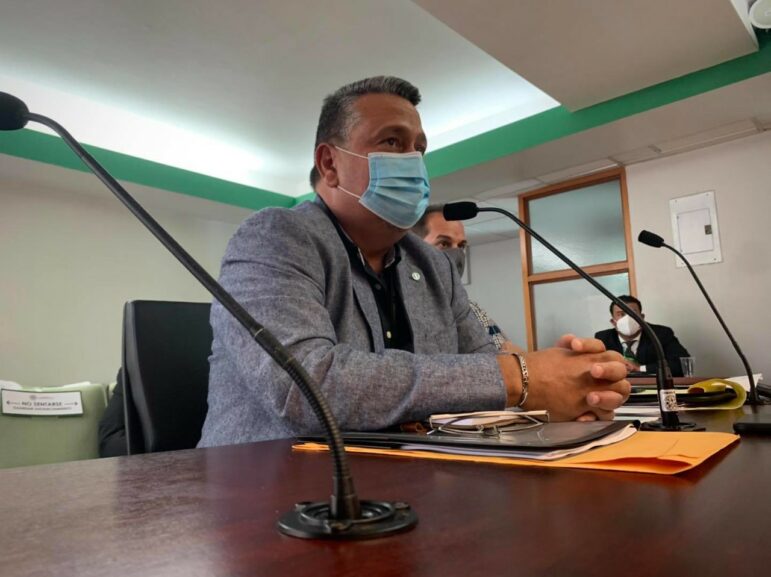
Photo from Facebook
DRNA’s sluggishness put Salinas communities at greater risk
Bermúdez Díaz initially assured that these improvements with recovery funds would not prevent water with sediment from percolating into the irrigation channels when others overflow during massive floods.
But when the CPI insisted a few days later about what the agency expects to do to prevent the irrigation channels from becoming clogged or overloaded during atmospheric events that bring heavy rain, the official said that projects paid for with FEMA funds include an evaluation to increase the capacity of the spillways of the channels. A spillway is a longitudinal opening to reduce the speed of water flowing down a channel and that allows the excess to be discharged.
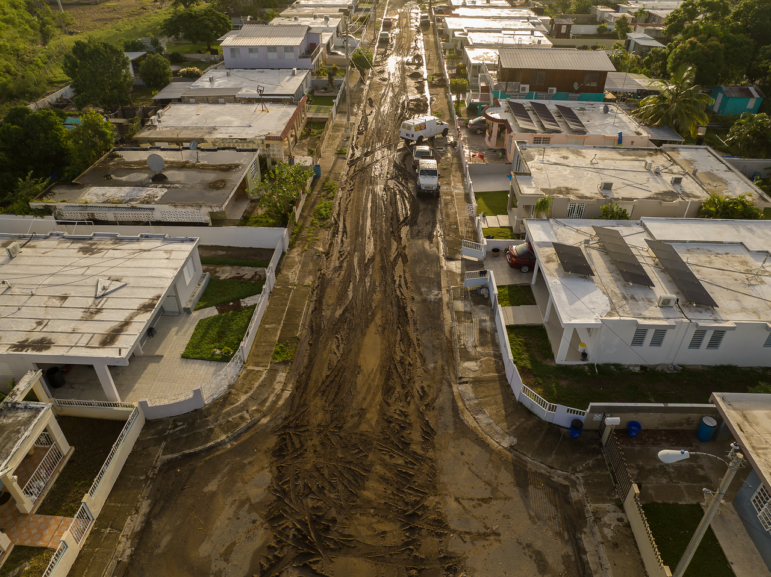
Photo by Abimael Medina | Centro de Periodismo Investigativo
“When we talk about runoff, it’s water that falls in the valleys and in the mountains through which [the channels] run. These are open channels to carry water from point A to point B. Any excess water is handled by the spillways. In the projects [with recovery funds] the possibility of increasing their capacity will be evaluated,” he said.
According to Bermúdez Díaz, the day before Hurricane Fiona, PREPA closed the flow of controlled water sent from reservoirs and dams through these channels to supply water to farmers and Puerto Rico Aqueduct and Sewer Authority (PRASA) customers.
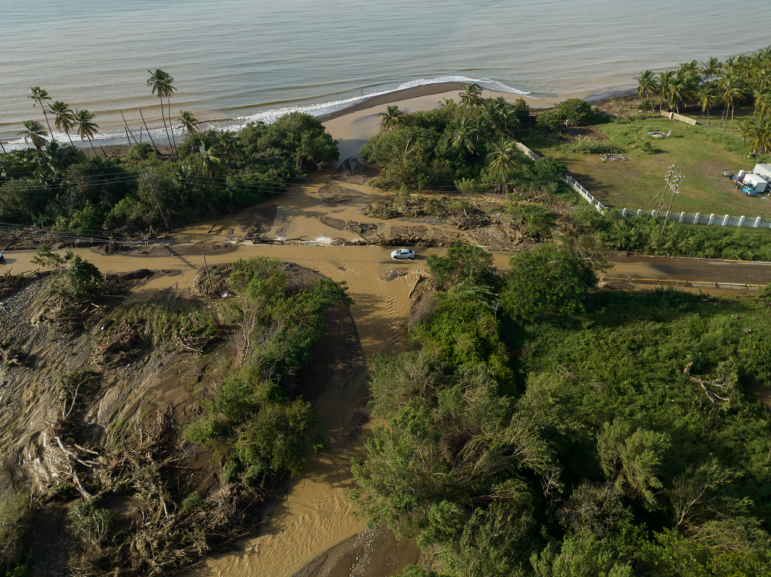
Photo by Abimael Medina | Centro de Periodismo Investigativo
Although the Director of Irrigation insisted that the irrigation channels were cleaned as part of their regular maintenance, he did acknowledge that the sediments carried by runoff when the Nigua River jumped its banks could have reached the irrigation channels and worsened the flooding in Salinas.
The CPI questioned the official about complaints from Salinas residents who said the channels in that area were not clean prior to Hurricane Fiona. Bermúdez Díaz rejected the complaints, arguing that daily maintenance is given to the channels as they are used to supply clean water to farmers and more than 600,000 PRASA customers.
“These are controlled water channels that are in service. If one of these channels has a blockage, I can’t provide water. If those channels hadn’t been maintained or were dirty, that water wouldn’t get through,” he said. He added that “each channel has guards and a group of employees dedicated to walking them, checking them and cleaning them with heavy machinery.”
The CPI asked the official for the cleaning logs of each channel from 2017 to 2022, but PREPA said the priority of the directors is in the emergency operations after the hurricane, so, at press time, they did not respond to the petition.
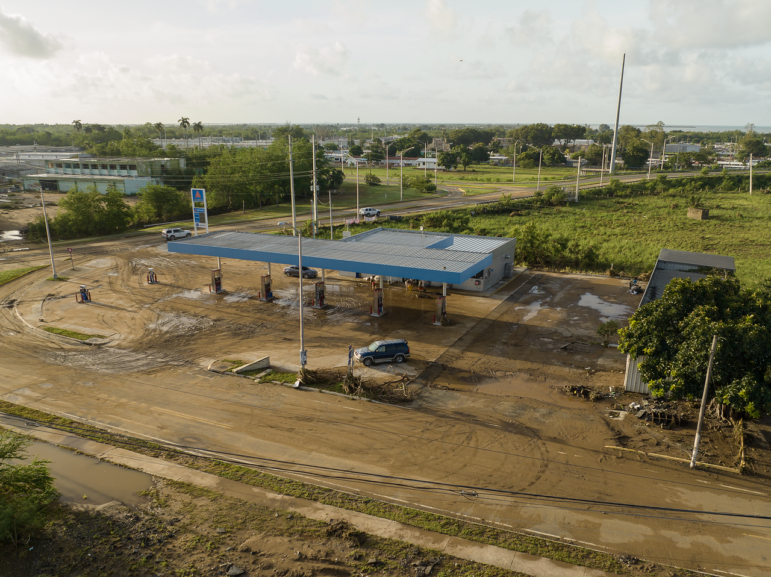
Photo by Abimael Medina | Centro de Periodismo Investigativo
Residents of the flooded area have a different version of cleaning of the channels.
Wanda Pica, a resident of the López neighborhood in Salinas, on the South coast, told the CPI that on Thursday, September 15, three days before Hurricane Fiona, she called the Salinas Citizen Service Office to request that they go and clean the irrigation channels because prior to the hurricane, area residents had cut down trees and tossed them into the ditches. About 16.5% of the 46,140 “cuerdas” (equivalent to about 44,755 acres) of land that comprises the municipality of Salinas are classified as flood-prone, according to FEMA’s Flood Insurance Rate Map.
Pica said municipal personnel came by on Saturday morning, but they only cleaned a section of other channels destined for the water discharge systems that are under the Department of Natural and Environmental Resources (DRNA, in Spanish), but not the irrigation systems.
Salinas Mayor Karilyn Bonilla Colón eluded answering questions from the CPI about specific complaints from residents of her municipality about the lack of maintenance in the irrigation channels run by PREPA. She agreed with Bermúdez Díaz that the public corporation constantly cleans the ditches, so she did not see the need to request an emergency cleaning prior to Hurricane Fiona.
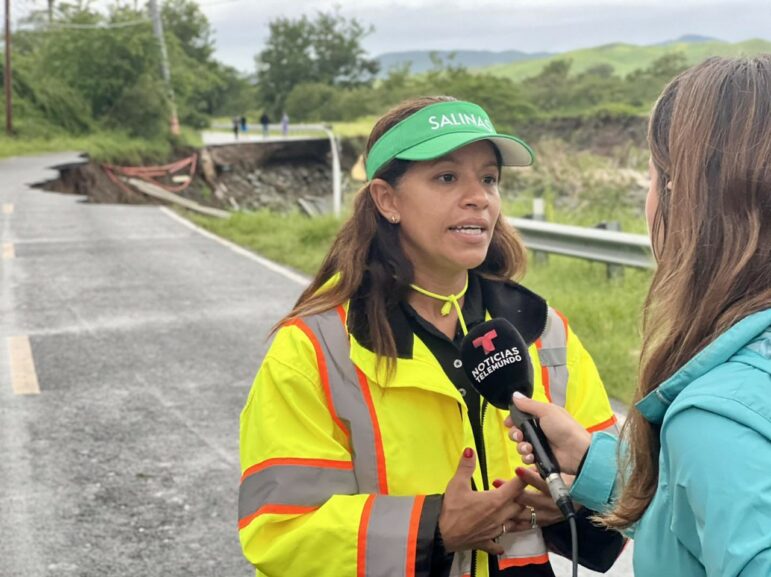
Photo from Facebook
“It’s not right to say that the irrigation channels have not received maintenance, because they are given ongoing maintenance because it’s what our farmers use daily for their crops. Furthermore, they aren’t drainage channels,” Bonilla Colón said.
The municipal executive believes that what aggravated the flooding problem was the lack of upkeep in the Nigua River, for which the DRNA is responsible. She said this situation contributed to the river’s overflow and that this is what caused the excess water to run through the drainage channels and the irrigation channels by force of gravity.
She assured that the municipality is only responsible for keeping the creeks, ditches, and drainage channels clean, through an agreement with the DRNA and that the agency is responsible for cleaning the Nigua River.
Bonilla Colón claimed that the DRNA did not respond to a request the municipality submitted last February to clean that river, as established in the agreement.
“The Municipality submitted the request to the DRNA to clean up the Nigua River in February, because it is their responsibility, and they didn’t do it. By not doing so, the week that the [atmospheric] event was announced, I asked for authorization to do it as an emergency and they granted it to me, but not until Thursday. The municipality carried out the work and not the DNER, which is their responsibility,” the official claimed, while specifying that the work done to clean the river on Saturday was only enough to address “the most critical parts,” but not the entire channel.
The Nigua River originates North of Barrio Lapa in Salinas, on the grounds of Camp Santiago, 300 meters above sea level and runs some 10.5 miles, according to the 2008 Comprehensive Water Resources Plan.
DRNA Secretary Anaís Rodríguez Vega admitted on Tuesday, September 20 at a press conference, that she knew that there were pending requests to clean the river. She said that she did not approve the cleanup permit earlier because she allegedly had to wait for approval from the US Army Corps of Engineers. But the CPI checked, and the Law to establish public policy regarding the prevention of floods in Puerto Rico, the conservation of rivers and creeks, and the dedication of greenways for public use does not require this permit, since USACE only works on river restoration projects to its natural watercourse, not in matters of cleaning and conservation.

File photo | Centro de Periodismo Investigativo
Rodríguez Vega acknowledged that by approving the municipality’s permit to clean up the Nigua River just three days before the hurricane, the work done was not enough to mitigate the severe flooding that occurred in Salinas.
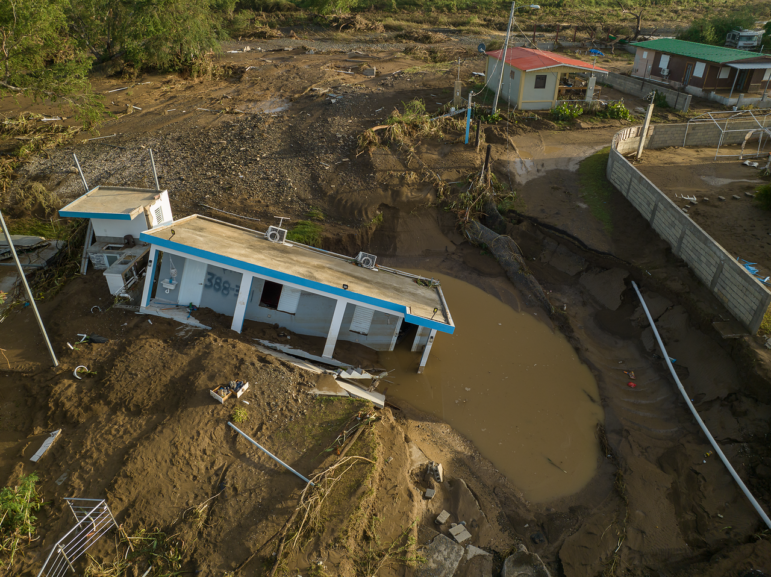
Photo by Abimael Medina | Centro de Periodismo Investigativo
The mayor still does not have an estimate of the damage in the wake of Hurricane Fiona in Salinas. She preliminarily said that 2,500 houses were flooded, and that much public infrastructure was affected. As of Wednesday, September 21st, 197 people remained sheltered in the Carlos Colón Burgos School, of the 426 who were evacuated Sunday night from the Playa, Playita, Las Mareas, and Las 80 neighborhoods.
According to the National Weather Service, Hurricane Fiona left more than 30 inches of accumulated rain from Saturday, September 17 to Monday, September 19 across Puerto Rico. This amount of water was evident in the southern region through which the irrigation channels run through Patillas, Arroyo, and Guayama and discharge into the Nigua River in Salinas. Meanwhile, between four and 12 inches accumulated in the areas where the other two PREPA channel districts are located — Lajas in the southwest and Isabela in the North.
The estimated $62 million for improvements to the three irrigation channel districts are part of the projects under the $9.4 billion grant that FEMA set aside for PREPA in 2020 through FAASt.
According to Central Office of Recovery, Reconstruction and Resiliency (COR3) data, of that amount, $32,140,000 would be for the district of Patillas and two allocations of $15 million for the districts of Isabela and Lajas. With these projects, PREPA would improve the flow of water from the reservoirs to supply PRASA and agricultural projects in the area.
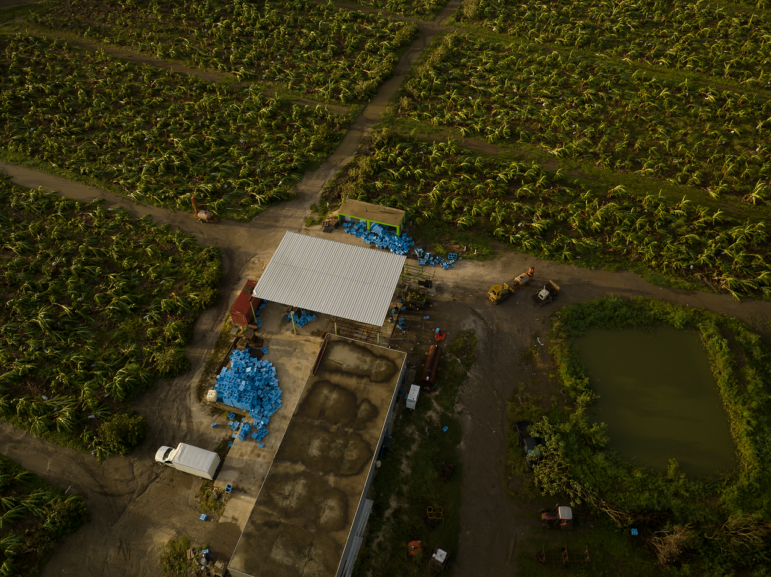
Photo by Abimael Medina | Centro de Periodismo Investigativo
The cost estimates for the three projects were completed last June, according to the most recent infrastructure report that PREPA submitted to the Puerto Rico Energy Bureau.
Solutions to mitigate channel risk would take a long time
Planner Félix Aponte Ortiz, a former member of the PRASA Governing Board, believes there are solutions that in the long run could help minimize the effect of overflowing irrigation channels during severe floods.
He noted that they would be burdensome initiatives and would take time and pointed out that the irrigation channels are not the only elements responsible for flooding in Salinas.
“Salinas has been in a period of significant drought for years; the land is exposed to erosion when it rains. This rain [from Fiona] broke a pattern of drought substantially. There was little dissipation of water energy because there are no trees in the area and the water dissolves the soil and carries it away while the wind carries branches [that clog drains]. All of this added to the storm surges,” he said.
He suggested reforestation done by PREPA around the irrigation channels as a barrier to sediment.
“Channels have cracks and leaks, and many of the complaints from the neighbors is that overflows happen when there are obstructions in the channel and can locally affect the surrounding communities. Vegetation [around the channels] serves as a filter because it can trap sediment and slow down the water. When the water gains speed it can dissolve the soil and at the same time transport that eroded material. With more vegetation, less soil is likely to reach the channels,” he explained.
He also recommended considering raising the channels so that the current of neighboring bodies of water do not reach them when they overflow.
Aponte Ortiz also recalled that the infrastructure of the irrigation channel networks dates from the early 20th century and uses construction material that is perhaps no longer suitable for the climatic conditions that Puerto Rico is experiencing, especially in southern municipalities.
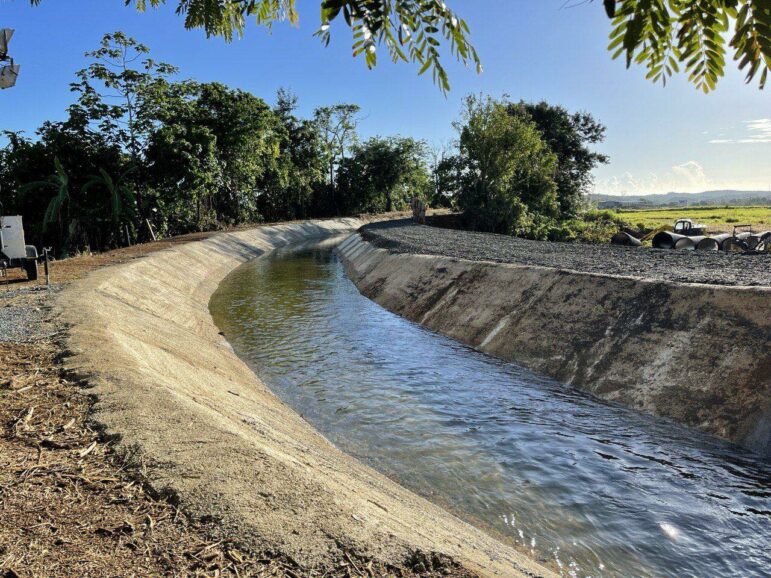
Photo from Facebook
Furthermore, the lands no longer have the same agricultural production as at the beginning of the last century and part of them are used for residential purposes. The floods that the residents of that area are now experiencing mostly respond to that surge in flow that was imposed on Salinas at the beginning of the 20th century for the old sugar plantations, according to the 2012 Salinas Municipal Territorial Plan.

Photo by Jack Delano | US Library of Congress
The planner proposed that these open channels be transformed by a PVC pipe system that would allow the water to flow using the existing ditches.
"PVC is light, flexible and relatively cheap, and the same easement of the channel could be used to transport water directly from the dam to the farmer or the treatment plant that is going to use that water for domestic use," he said.
Próximo en la serie
8 / 8
¡APOYA AL CENTRO DE PERIODISMO INVESTIGATIVO!
Necesitamos tu apoyo para seguir haciendo y ampliando nuestro trabajo.


